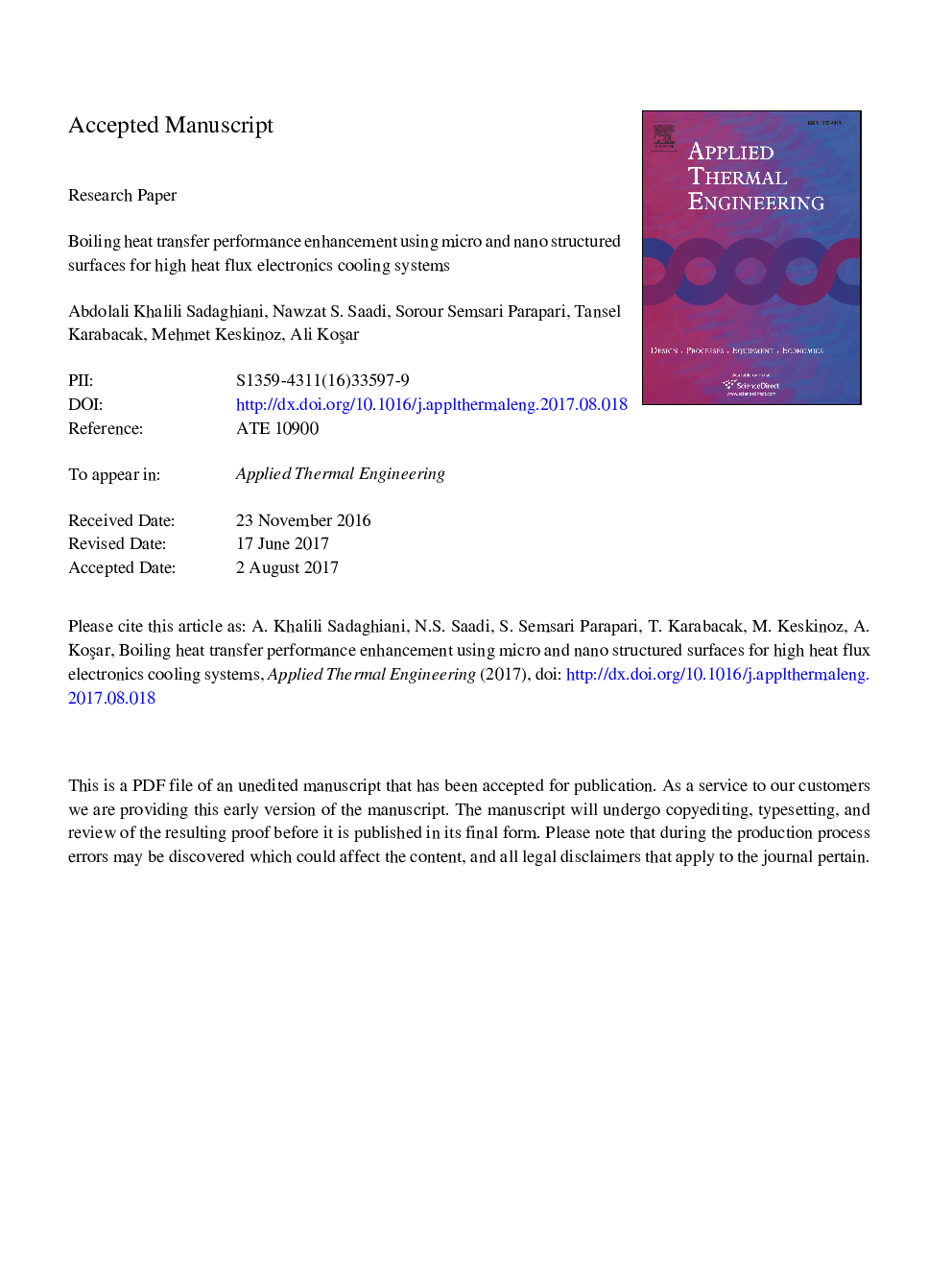| Article ID | Journal | Published Year | Pages | File Type |
|---|---|---|---|---|
| 4990736 | Applied Thermal Engineering | 2017 | 44 Pages |
Abstract
Flow boiling enhancement using structured surfaces in microchannels is a promising method to achieve high heat removal rates. In this study, it is aimed to study the effect of surface structure size (size scale i.e. micro and nano size) on boiling heat transfer characteristics of samples with different surface morphology. High speed and thermal cameras were employed for analyzing the obtained results. A channel with dimensions of 14Â ÃÂ 15Ã0.5Â mm3 was utilized in the experiments. Distilled water was used as the working fluid, and the experiments were conducted at mass fluxes of 50, 75, 100 and 125Â kg/m2Â s. Heat transfer coefficients were obtained along with associated boiling images. Based on the visualization study results, two flow maps were constructed for a rectangular microchannel with micro and nano scale structures on copper surfaces. It was observed that the surface morphology remarkably changed boiling heat transfer mechanisms. According to the obtained thermal images, bubble departure frequency increased with surface structures, and the surface temperature distribution was more uniform for surfaces with nano scale structures (nano-structured and micro-nano-structured) compared to other surfaces (untreated, micro-structured). The promising results reveal the potential of micro and nano scale structured surfaces for achieving improved energy efficiency for electronics cooling systems.
Related Topics
Physical Sciences and Engineering
Chemical Engineering
Fluid Flow and Transfer Processes
Authors
Abdolali Khalili Sadaghiani, Nawzat S. Saadi, Sorour Semsari Parapari, Tansel Karabacak, Mehmet Keskinoz, Ali KoÅar,
